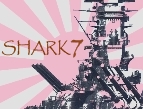treespider
Posts: 9796
Joined: 1/30/2005
From: Edgewater, MD
Status: offline

|
quote:
ORIGINAL: Jim D Burns
Page 104 table 3.13 breaks down the division of labor into three industrial groups. Group I is durable goods manufacturing, which in wartime provided the foundations of the munitions industry. Group II consist of workers in agriculture, mining, government, transportation and public utilities the essential sectors. Group III consists of workers in non-durable manufacturing, construction, finance and services the inessential trades.
Britains war economy saw as many workers as possible reallocate from Group III to Group I to increase war mobilization. The US saw a remarkable increase in Group I, but group II remained constant and Group III fell slightly, but only in the peak years 1943 and 1944.
Composition of United States labor force by industry group, 1939-1948 (thousands)
. Group I
..
. Group II
..
. Group III
1939. 4,715
. 16,515
18,119
1940. 5,363
. 16,619
18,849
1941. 6,968
. 17,106
20,695
1942. 8,823
. 18,023
21,368
1943. 11,084
.. 18,695
.. 20,717
1944. 10,856
.. 18,633
.. 20,263
1945. 9,074
. 18,386
.. 20,634
1946. 7,742
. 18,445
.. 23,415
1947. 8,385
. 18,589
.. 24,900
1948. 8,326
. 18,813
.. 25,732
So we can gather from this data that the US made no major sacrifices in consumer goods production during the war. They maintained Group II at current levels throughout the war and made no major effort to reallocate labor force from Group III to Group I as the British did.
This dramatically demonstrates that there was still a very large untapped pool of labor available to put into Group I if needed, but it simply was not needed. Im sure there were occasional shortages in specific instances as the armaments industry grew, but on a whole the US never suffered labor shortages that would have affected overall production capacity.
In fact Id go as far as to say they never even came close to their full production potential during the war. Had massive reallocations taken place, the US could have easily doubled Group I manufacturing abilities.
Jim
Appears to me that the table belies the narrative.. According to your figures employment figures began to drop after a peak in 1943.
It's also curious in the Oxford Companion there is an interesting chart on page 1182 that shows that from 1943 on with every increase in military personnel there was a corresponding decrease in the Labor Force.
In addition in Global Logistics and Strategy pages 546-551 discusses "Strains on Manpower and Production", this section contains the following quotes:
"The critical shortages the Joint Logistics Comittee noted in the Pacific in October 1944 were a measure of the strains full-scale war on two fronts was imposing on US military resources, particularly on military manpower, cargo shipping, and Army supplies."
"Practically no significant adjustments could be made in these programs to meet the immediate situation, regardless of the theoretical capacity for further expansion of war production."
"The effects of heavy drafts for the military services and the tendency of individual members of the labor forces in 1944 to seek employment offering greater security and permanence produced increasing labor shortages in key war industries (23)"
"...the European theater calculated that it would be short something over 150,000 service troops. The War Department was unable to make up this deficit, despite ETOUSA pressure. The theater finally agreed to sacrifice ten heavy artillery battalions in order to get the equivalent in service troops, but a substantial shortage remained and nade necessary more extensive use of civilian and prisoner-of-war labor."
There is no dispute that the United States was a prodigous manufacturer of war material. However by 1944 the US had started to hit a wall...
_____________________________
Here's a link to: Treespider's Grand Campaign of DBB "It is not the critic who counts, .... The credit belongs to the man who is actually in the arena..." T. Roosevelt, Paris, 1910 |
 Printable Version
Printable Version







 I read somewhere that it was around 20 a day once they were up to full production. They had an entire factory devoted to just Hellcats IIRC.
I read somewhere that it was around 20 a day once they were up to full production. They had an entire factory devoted to just Hellcats IIRC. 








 New Messages
New Messages No New Messages
No New Messages Hot Topic w/ New Messages
Hot Topic w/ New Messages Hot Topic w/o New Messages
Hot Topic w/o New Messages Locked w/ New Messages
Locked w/ New Messages Locked w/o New Messages
Locked w/o New Messages Post New Thread
Post New Thread